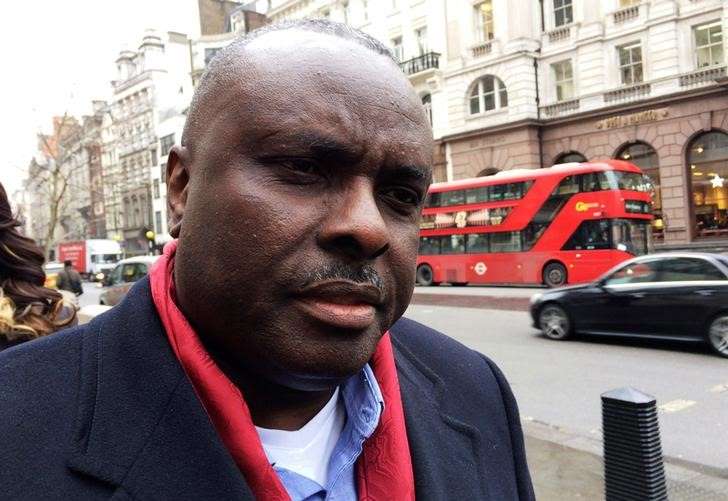Black people in US dying at alarming rates. Here’s why

By Nina Misuraca Ignaczak and Michael Hobbes
Greg Bowens stopped counting when seven people he knew well had died of COVID-19. New names kept coming up on his social media feed, day after day.
“How is it possible that I would know this many people who had died?” Bowens, a 55-year-old public relations professional and founder of the Grosse Pointe/Harper Woods NAACP Branch, recalled thinking to himself.
That was before Michigan’s Department of Health and Human Services started releasing official data showing the racial breakdown of cases and deaths on April 2. That data showed that, although just 14% of the population of Michigan is Black, 33% of coronavirus cases and 41% of deaths were in the Black community. It was little surprise to Bowens and other African Americans in Detroit, who had been witnessing the people around them falling sick and dying for several weeks.
The metro area’s first high-profile African American death was Marlowe Stoudamire, a well-connected business consultant, on March 26. Then there was a popular high school basketball coach. School district employees. A city bus driver who had taken to social media to complain about a passenger coughing on him. One woman lost her aunt the same day she rushed her mother and grandmother to the emergency room. Her grandmother died a week later. Her mother is on a ventilator and is expected to recover.
The state’s data is incomplete, as 30% of cases do not list the person’s race. But a nearly complete data set from Washtenaw County showed a similar trend, with African Americans accounting for 49% of hospitalizations but only 12.3% of the population.
In Michigan, it’s not just Detroit. And it’s not just poverty. Though Detroit is 80% Black with a poverty rate of roughly 35% ― more than triple the national average ― other, more affluent suburbs with substantial African American populations are also getting hit hard.
“Black people who are middle class and upper-middle class are getting this and dying,” said Bowens. “And the only thing that folks in Southfield, Detroit, Eastpointe, Harper Woods and other places have in common is that they’re Black.”
It’s also not just Michigan. Though the U.S. Centers for Disease Control and Prevention doesn’t release coronavirus data by race, city and state data indicates that COVID-19 cases are heavily concentrated in the Black population. In Chicago, 23% of residents are Black but account for 58% of COVID-19 deaths. In Milwaukee, Blacks are roughly one-quarter of the population and roughly one-half of COVID-19 cases.
In Louisiana, seven out of 10 COVID-19 victims have been Black. Coronavirus hot spots include a number of cities with large nonwhite populations, such as New Orleans and Detroit, as well as the majority-minority New York City boroughs of Queens and the Bronx.
Though just 14% of the population of Michigan is Black, 33% of coronavirus cases and 41% of deaths were in the Black community.
‘We Haven’t Dealt With Social Inequality’
Sociologists and epidemiologists say that nearly every condition that increases patients’ vulnerability to coronavirus — from asthma to diabetes to HIV — appears at higher rates in the Black population.
“We haven’t dealt with social inequality in America, whether in education or job or incomes,” said Hedwig Lee, a sociology professor at Washington University in St. Louis who studies racial disparities in health. “We knew that groups with pre-existing health vulnerabilities would have a higher risk of death. But still, it’s sobering to see the numbers.”
African Americans have twice the rate of heart disease, stroke and diabetes compared to Caucasians. They suffer from heart failure, asthma and hypertension at higher rates and earlier in their lives. Over decades, these disparities have compounded a life expectancy that is four years shorter for Black Americans than for whites.
“We know that differences in education and job opportunities lead to chronic health problems in the long term, but the coronavirus is showing that they lead to health problems in the short term, too,” Lee said.
The Black community may also have vulnerabilities that make its members uniquely susceptible to COVID-19. African Americans are less likely to have jobs that allow them to work from home and more likely to use public transportation. Black families are more likely to live in multi-generational households, potentially exposing elderly relatives to the virus. Black neighborhoods are more likely to be “health care deserts” — neighborhoods without doctors or medical clinics — which may have limited access to tests in the early days of the pandemic.
“A lot of people have service work jobs, and they make small wages,” said Pastor Barry Randolph, who leads the Church of the Messiah in Detroit’s Islandview neighborhood and has seen dozens of his parishioners fall victim to the virus. “People are living together in the same house to be able to stay afloat, and there’s children and maybe seniors, and everybody’s in the house, and so if it affects one, it’s going to affect everybody.”
Residents of the Bronx, which is majority Black and Latino, appear to have roughly the same likelihood of catching COVID-19 as the rest of New York City but twice the chance of dying.
Compounding Vulnerabilities
So far, the data emerging from the COVID-19 pandemic indicates that, although African Americans are slightly more likely to contract the virus, they are much more likely to die of it. In Milwaukee, for example, African Americans make up half of coronavirus cases but 81% of deaths. Residents of the Bronx, which is majority Black and Latino, appear to have roughly the same likelihood of catching COVID-19 as the rest of New York City — but twice the chance of dying.
“COVID-19 is a perfect storm for people dealing with a lot of adversity,” said David R. Williams, a Harvard University professor who researches race and health.
This striking disparity follows a nearly identical pattern of other health conditions: Even when Blacks and whites suffer from diseases at the same rates, African Americans have higher mortality rates. Black people with diabetes, for example, are more likely to die of complications than white people with diabetes. African Americans are roughly 30% more likely to be diagnosed with hypertension than whites but up to 300% more likely to die of a stroke. The same goes for mental illness: Though Blacks suffer from major depression less than whites, their condition is more likely to be severe, disabling and untreated. Think about the phrase ‘I can’t breathe’ in reference to COVID-19 and consider where we’ve heard that before.
Hedwig Lee, Washington University sociologist
Much of this disparity can be explained through differential access to health care. Williams noted that African Americans are less likely to have health insurance and pay higher copays and deductibles even when they do. Black patients are less likely to receive preventative screenings and wait longer for care after testing positive for cancer, HIV and diet-related diseases. They are also more likely to receive care from doctors who aren’t board certified.
“African Americans lack access to health care, and when they do get it, they get worse care,” he said.
Stress also plays a role. Over the last decade, numerous studies have documented that anticipating racial discrimination triggers a nervous system response that increases minorities’ vulnerability to chronic disease.
“Vigilance around being discriminated against creates wear and tear in the body,” Lee said. “That affects mental and physical health and immune function in ways that could lead to higher risk of getting COVID-19 and having complications.”
Policies such as educational and housing segregation and mass incarceration likely contributed to the higher COVID-19 deaths rates among African Americans.
A Familiar Pattern
COVID-19 is just the latest episode in a decades-long trend of deliberate neglect of the health of America’s Black population. Williams pointed out that in 1950, Blacks had roughly the same rates of coronary disease as whites and better cancer survival rates. But as mortality improved among whites, it stagnated among African Americans.
“This is the result of a set of social policies working as designed,” Williams said, noting that many of the cities with major COVID-19 outbreaks — Detroit, Chicago, Milwaukee — are not just heavily Black but also heavily segregated. “Racial differences are linked to opportunity at the neighborhood level. African Americans are not doing poorly because of their genes, they’re doing poorly because of the policies we’ve created that constrain their access to resources.”
Former Detroit Health Department Director Abdul El Sayed said he hopes the coronavirus will encourage America to face up not only to its inequitable history and social policies but also to the fallacy of its ethos of rugged individualism.
“We have to get away from this behavioral agency frame, which says that the reason that some people suffer more than others is because of choice,” said El Sayed. “Oftentimes we frame the narrative from a position of privilege, and the thing that privilege allows you to do is have a choice. And the thing about poverty is it takes the choices away.”
Bowens believes state and local governments must be more proactive and direct in their communication with African American communities. He wrote an opinion article calling on Michigan Gov. Gretchen Whitmer to customize COVID-19 messaging and tactics, like using cellphone providers to deliver text messages and working with churches and urban radio stations.
This is the result of a set of social policies working as designed. David R. Williams, Harvard professor
Solving the COVID-19 racial gap will also require a dedicated effort to document the disparity. Kristen Clarke, president and executive director of the Lawyers’ Committee for Civil Rights Under Law, told reporters on a conference call Monday that the CDC collects information on the race of COVID-19 victims but does not release the data to the public.
Other reports indicate that local health agencies are systematically underreporting deaths due to coronavirus, which is likely to have a racial dimension as well: Lee noted that patients who don’t seek care, are denied tests or are turned away from emergency rooms may not show up in the death statistics.
“We know racial and ethnic minorities are likely to be treated differently by the health care system, especially during high-stress situations where people have to make quick decisions, which is what’s happening right now,” she said.
Understanding the racial effects of the coronavirus requires acknowledging the unique vulnerabilities of the Black community and why those vulnerabilities exist.
“Black people are dying now because of COVID-19, but before, they were dying because of other conditions,” she said. “Think about the phrase ‘I can’t breathe’ in reference to COVID-19 and consider where we’ve heard that before.”
_This article originally appeared on HuffPost.



